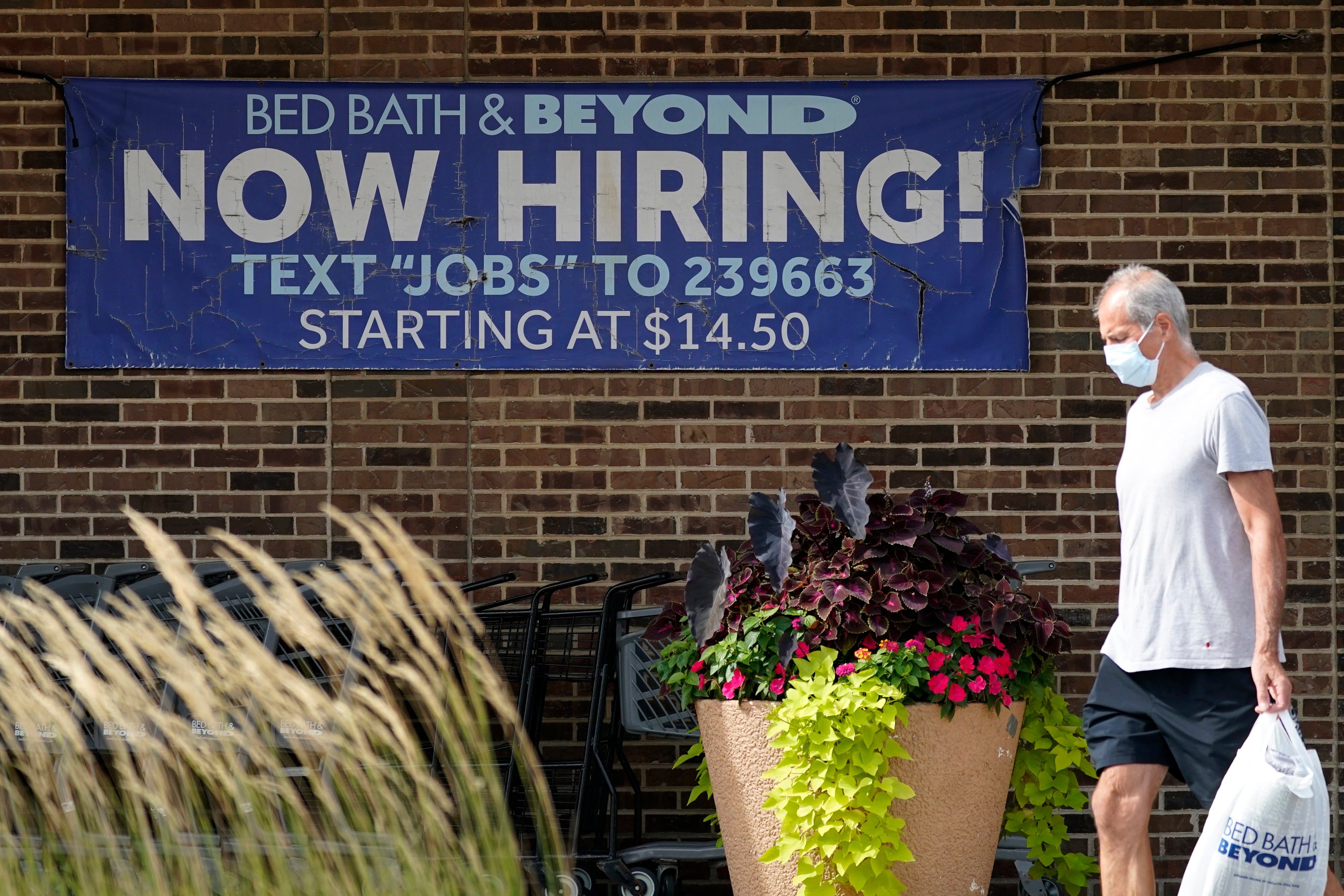Fewer people seek US unemployment aid amid solid hiring
The number of Americans filing for jobless benefits dropped last week, a sign that few companies are cutting jobs despite high inflation and a weak economy

Your support helps us to tell the story
From reproductive rights to climate change to Big Tech, The Independent is on the ground when the story is developing. Whether it's investigating the financials of Elon Musk's pro-Trump PAC or producing our latest documentary, 'The A Word', which shines a light on the American women fighting for reproductive rights, we know how important it is to parse out the facts from the messaging.
At such a critical moment in US history, we need reporters on the ground. Your donation allows us to keep sending journalists to speak to both sides of the story.
The Independent is trusted by Americans across the entire political spectrum. And unlike many other quality news outlets, we choose not to lock Americans out of our reporting and analysis with paywalls. We believe quality journalism should be available to everyone, paid for by those who can afford it.
Your support makes all the difference.The number of Americans filing for jobless benefits dropped last week, a sign that few companies are cutting jobs despite high inflation and a weak economy.
Applications for unemployment benefits for the week ending Sept. 24 fell by 16,000 to 193,000, the Labor Department reported Thursday. That is the lowest level of unemployment claims since May. Last week’s number was revised down by 4,000 to 209,000.
Jobless aid applications generally reflect layoffs. The current figures are very low historically and suggest Americans are benefiting from an unusually high level of job security. A year ago this week, 376,000 people applied for benefits.
The economy shrank in the first half of the year, the government said in a separate report Thursday on gross domestic product, the broadest measure of the economy's output.
Yet employers, who have struggled to rehire after laying off 22 million workers at the height of the pandemic, are still looking to fill millions of open jobs. There are currently roughly two open positions for every unemployed worker, near a record high.
With companies desperate for workers, they are much more likely to hold onto their current staff.
Employers are also offering higher pay and benefits to attract and keep employees. Those higher salaries are contributing to inflation pressures.
The Federal Reserve is aiming to bring down inflation by rapidly raising its key interest rate, which is currently in a range of 3% to 3.25%. A little more than six months ago, that rate was near zero. The sharp rate hikes have pushed up mortgage rates and other borrowing costs. The Fed hopes that higher interest rates will slow borrowing and spending and drive inflation down towards its 2% target.
Fed officials are increasingly warning that the unemployment rate will likely have to rise as part of their fight against rising prices. If the number of unemployment claims drops, as it did last week, it suggests the Fed may have to raise rates even higher than it plans to slow the economy.